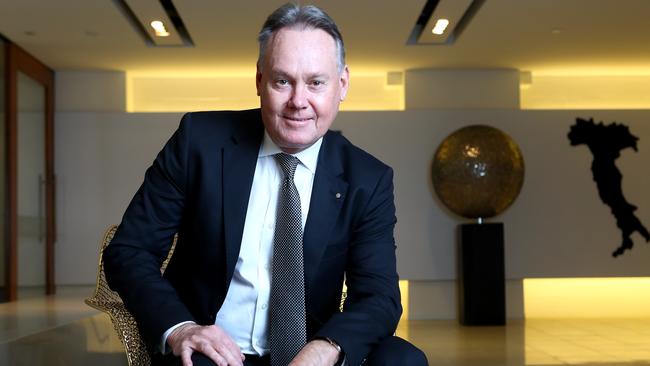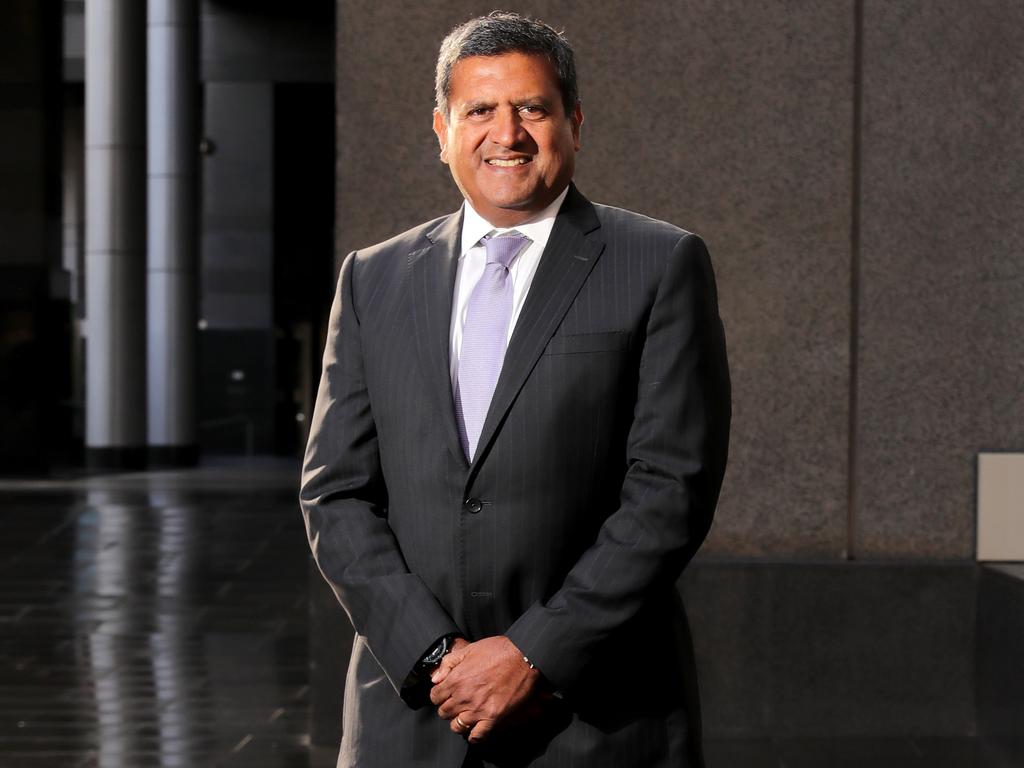The Australian’s 2022 CEO Survey: Brickworks’ Lindsay Partridge
In his responses to The Australian’s 2022 CEO Survey, Brickworks chief executive Lindsay Partridge details the challenges his company faces.

In his responses to The Australian’s 2022 CEO Survey, Brickworks chief executive Lindsay Partridge details the challenges his company faces.
How are inflation and interest rates affecting your business and customers? Does it change your approach to capital management?
Increasing interest rates are set to act as a handbrake on the housing industry in the medium term. In Australia, this is increasingly evident in declining building approvals data and our customers (home builders) reporting reduced sales activity and display-home foot traffic. This is likely to adversely impact on sales of our building products arm.
In terms of our building property operations, high inflation is causing pressure on our unit costs, with prices of key inputs such as energy, transport and labour all impacted. Rising costs are also having an impact on capital costs for major projects.
Within our industrial property trusts we are seeing our valuations supported by significant growth in rental yields, which is more than offsetting the impact of higher rates on capitalisation rates. Prime industrial property continues to be in high demand, despite the impact of inflation and interest rates.
Higher costs and higher interest rates mean that we are taking a more prudent approach to capital management. We are also building in more contingency to our capital cost estimates.
We have strengthened the balance sheet over the past 12 months via some asset sales, in order to provide more buffer on our bank covenants.
Where do you see risk now for Australian business – energy, supply chain, cyber? What does the country need to do to attract investment?
Energy security remains a key risk for the country, and we have been warning about a domestic gas shortage across Australia’s east coast for many years. We only need to look to Europe to understand the cost of continued inaction by government. In this region we are already seeing manufacturers being forced to shut down operations.

This includes some of our valued suppliers. In order to avoid a similar situation in Australia, it is critical that additional sources of reliable and affordable gas supplies that are committed for domestic use, such as the Narrabri gas project, are brought online as quickly as possible.
We also see industrial relations as an area of risk.
More broadly, we believe the government needs to avoid unnecessary taxes, regulation and red tape. They need to keep out of the way, so business can make investment decisions for the long term with certainty.
How is energy transition affecting you? What needs to happen here?
We are a large industrial user of natural gas, with no viable alternatives broadly available. As a result we are significantly exposed to the cost of gas and over the past five years we have seen our gas costs more than double.
Fortunately, we have recently been able to secure a long-term gas agreement with Santos that provides us with energy security at an affordable price.
We are also investing significantly to reduce our energy intensity, through new equipment (to improve efficiency) and renewable projects (such as waste to energy) where it is feasible.
The government needs to develop a long-term plan that not only incentivises new renewable sources of energy but provides adequate baseload energy that is reliable and affordable.
Productivity growth is pitched at a low 1.2 per cent. What needs to happen to lift productivity? What should a reform agenda prioritise?
Interesting question.
The main reason for poor productivity growth is the expanding public service. This has to be reduced to correct the poor growth.
Private businesses will always strive to improve their costs and efficiency.
However, centralised bargaining will not help as the unions are fundamentally against any productivity improvement.
Will the government’s changes on childcare and paid parental leave move the dial on workforce participation and productivity?
No doubt childcare is essential for families with young children. Having a mechanism for employers to provide this at large workplaces would be efficient. It should be a tax deduction.
Read more: The Australian’s CEO Survey 2022
Has your business adapted to labour shortages? Do you see IR changes, including industry-wide bargaining, as progress? Has your thinking on working from home changed in 12 months?
Labour shortages have had a significant impact on our business over the past 12-24 months. The issue varies across region and by operation but has been most acute in areas such as roof tilers in Melbourne and truck drivers in Western Australia. Fortunately, these labour shortages appear to be easing in recent months.
Across most of our sites we have developed strong relationships with our employees, built on trust and flexibility. We believe that flexibility in workplace bargaining delivers the best results for employees and employers, so we are concerned that industry-wide bargaining will result in worse outcomes for all parties.
Most of our jobs are in our manufacturing plants or sales roles and as such working from home is impractical. We believe a collaborative workplace culture is best fostered through our office employees being on site. Having said that, we appreciate there are some employees who may need to work from home in special circumstances and we always try to accommodate that.
Any other factor or concern not covered above?
Delays in immigration remain a concern, as it is one way to help overcome the labour shortage. But changes to the amount pensioners can earn would also help the situation. Compared to the United States we have very low work participation in the over-60 age group.







To join the conversation, please log in. Don't have an account? Register
Join the conversation, you are commenting as Logout